Proportion and number of women researchers: In 2017, Elsevier analyzed the research output broken down by gender for different countries, including Brazil. The published report, Gender in the Global Research Landscape (2017) shows that overall, the number of researchers in Brazil has greatly increased from the period 1996-2000 to 2011-2015. Additionally, the proportion of women that comprise Brazilian researchers has also increased from 38% in the former period to almost half (49%) in the latter period. Within the 2011-2015 period, engineering researchers are underrepresented: Women scholars in engineering represented only 3% of total female researchers compared to about 7% of the male researchers. Women researchers are also underrepresented in several STEM fields such as computer science, engineering (broad), and mathematics. In each of these STEM fields, women comprise less than 30% of the researchers. In the period 2011-2015, women researchers have almost reached parity in the field of chemical engineering, representing 45.7% of researchers in that field, while in nursing and psychology, women represent the majority of the researchers.
Proportion and Number of Researchers by Gender, Brazil, 1996-2000 and 2011-2015
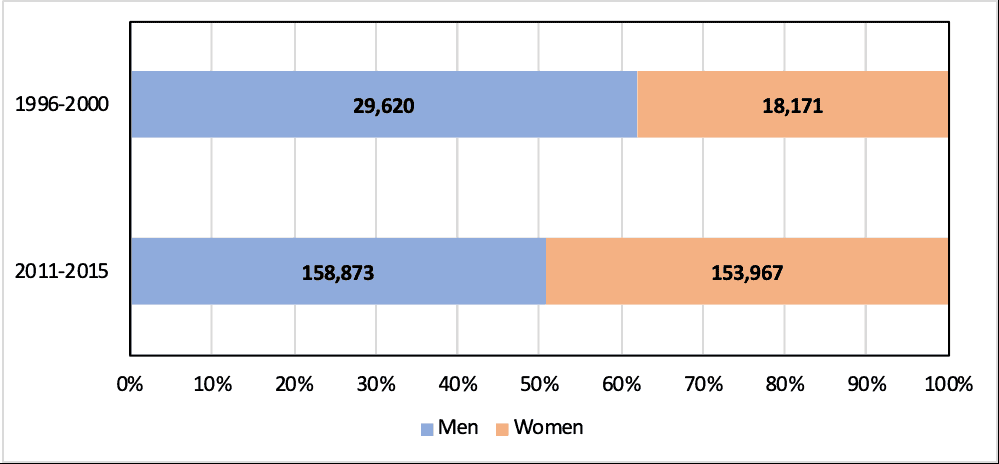
Source: Elsevier. 2017. Gender in the Global Research Landscape.
Proportion of Researchers by Subject Area and Gender, Brazil, 2011-2015
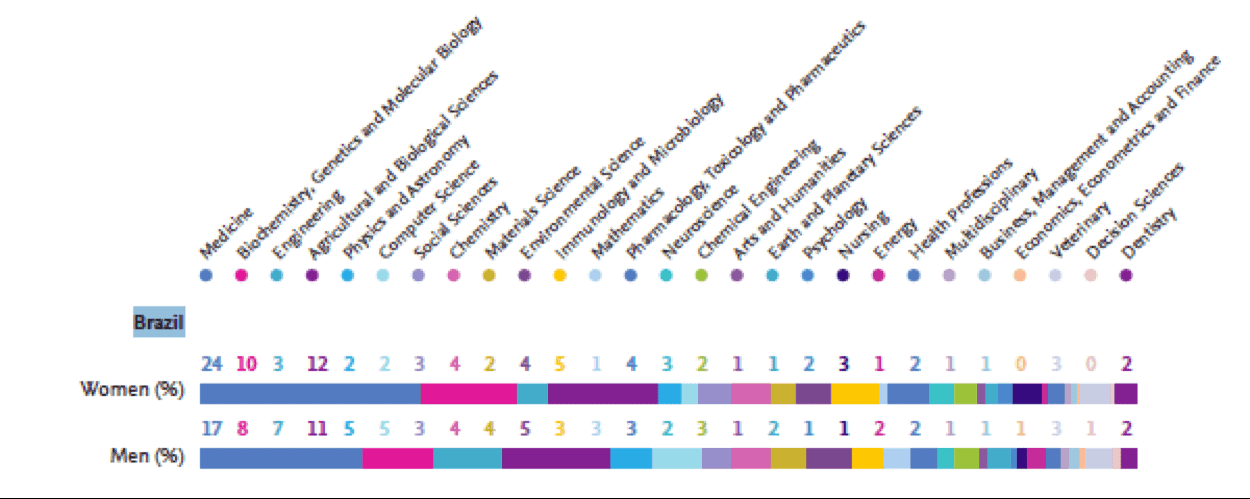
Source: Elsevier. 2017. Gender in the Global Research Landscape. (Figure 1.2).
Proportion and Number of Researchers by Gender for Selected Subject Areas, Brazil, 1996-2000 and 2011-2015
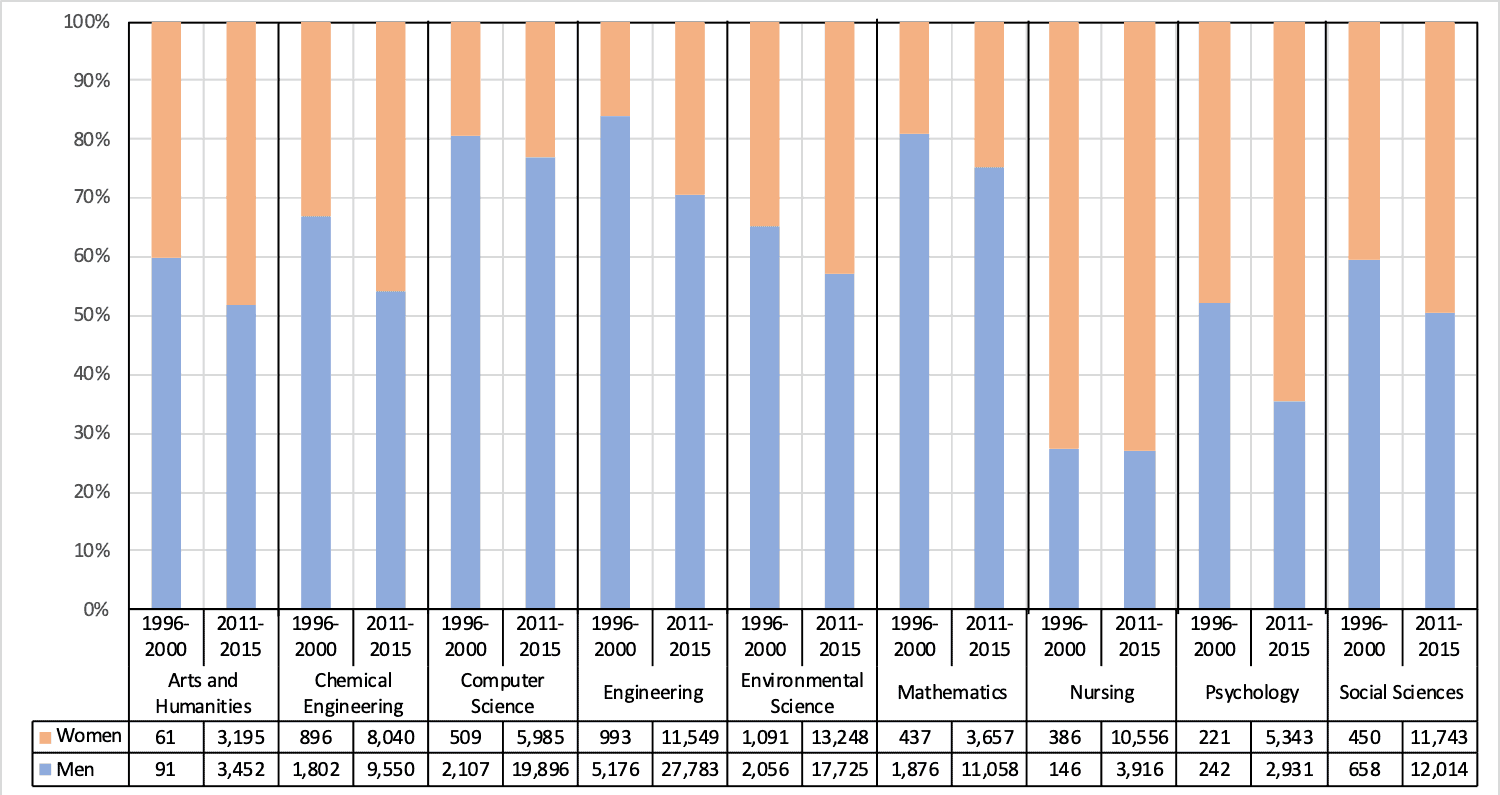
Source: Elsevier. 2017. Gender in the Global Research Landscape.
Scholarly Output:
Although women scholars represent almost half of researchers in Brazil, their scholarly output per researcher (1.2) is less than that of their male counterparts (1.5). Moreover, while among male Brazilian researchers the scholarly output from 1996-2000 to 2011-2015 is about the same, among women Brazilian researchers, this scholarly output per researcher had decreased from 1.5 to 1.2 publications in the latter time frame, respectively. Within the field of engineering, Brazilian women appeared as authors in 6,321 publications in 2011-2015, which is less than the number of publications in which men appeared as authors (19,010). Among the engineering publications where Brazilian women contribute as authors, they were less likely to be the lead scholar, appearing as the first and/or corresponding author in 48% of these publications. However, in engineering publications where Brazilian men were listed as contributing authors, they were more likely to appear as the lead scholar, appearing as the first and/or corresponding author in 63% of these publications.
Scholarly Output per Researcher by Gender, Brazil, 1996-2000 and 2011-2015
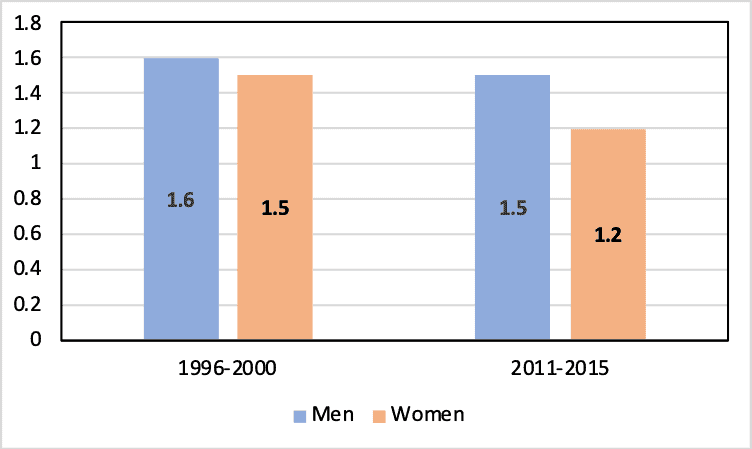
Source: Elsevier. 2017. Gender in the Global Research Landscape.
Lead Scholarly Output as a Share of Total Scholarly Output in Engineering by Gender, Brazil, 2011-2015
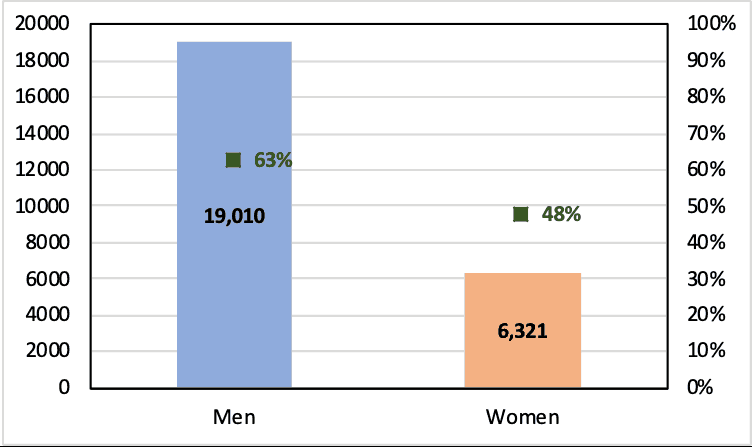
Source: Elsevier. 2017. Gender in the Global Research Landscape.
Additional Resources
- 2017. Gender in the Global Research Landscape. Retrieved from: https://www.elsevier.com/research-intelligence/resource-library/gender-report